
CockroachDB Audit Trail
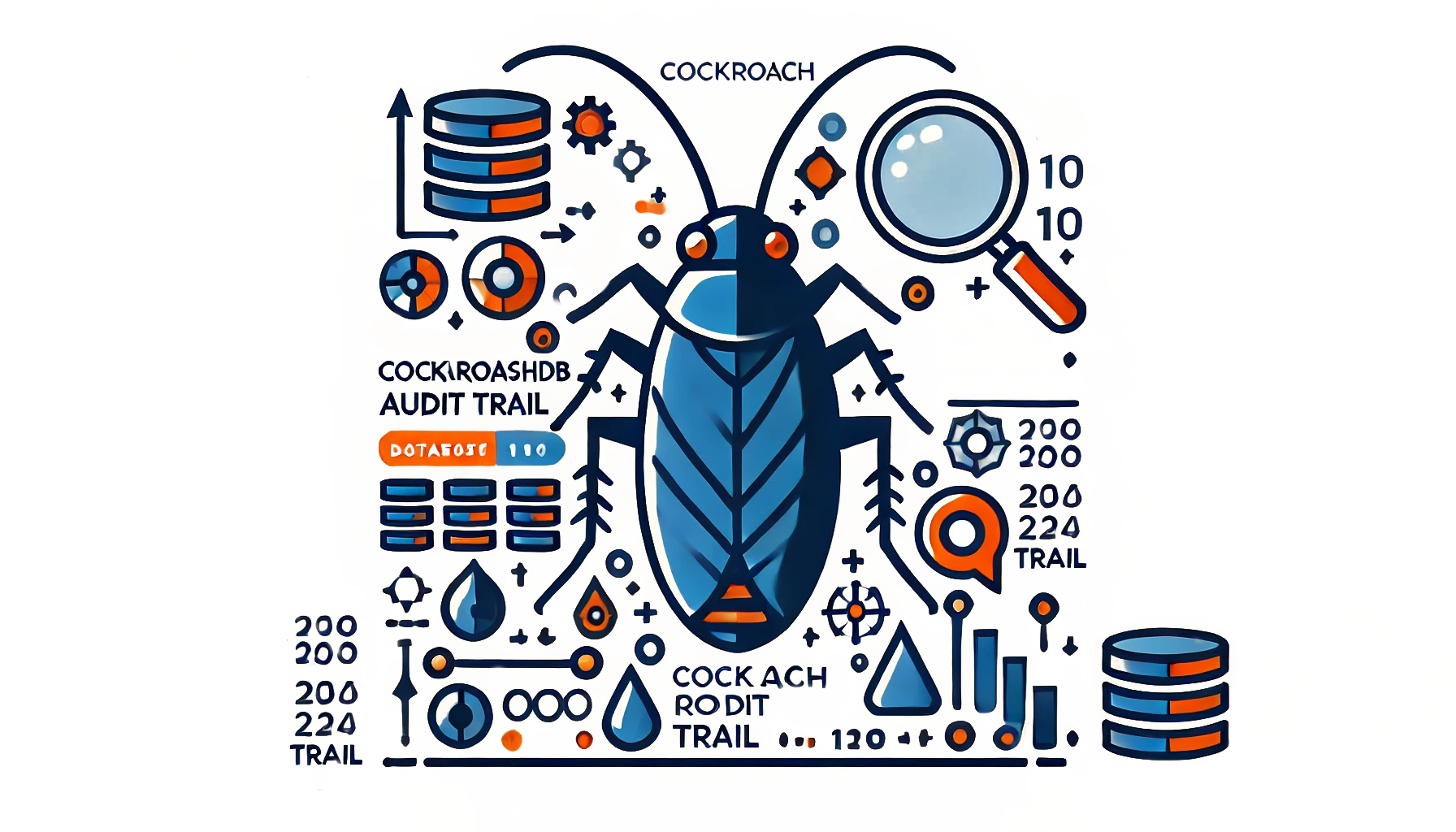
Recent data from the 2024 Thales Threat Report indicates that 52% of data breaches involve compromised database credentials. Organizations implementing a CockroachDB audit trail can effectively monitor and track database activities to help prevent unauthorized access. By comprehensive audit capabilities, businesses can maintain detailed records of database interactions, supporting both security and compliance requirements. As organizations manage growing volumes of sensitive data, implementing reliable audit mechanisms has become an integral part of database administration.
What is an Audit Trail in CockroachDB?
An audit trail for CockroachDB records all database transactions. The system tracks what changes people made, who made them, and when they occurred. With this tracking capability, monitoring sensitive data becomes straightforward. The comprehensive logging helps ensure accountability and meet compliance requirements like GDPR, HIPAA, and PCI-DSS. Additionally, native mechanisms in CockroachDB enable database administrators to monitor data manipulation and create reliable audit logs.
Native Auditing in CockroachDB Using SQL
CockroachDB provides powerful tools for native auditing, enabling change tracking without external systems. Therefore, database administrators can create comprehensive audit trails using SQL features, views, and stored procedures.
Using Views for Auditing Changes
Views offer an effective way to track changes in CockroachDB databases. While CockroachDB lacks a built-in audit log feature like some other databases, users can create custom views that function as audit logs. Here’s an example:
CREATE VIEW audit_log AS SELECT id, first_name, last_name, email, ip_address, now() as timestamp FROM user_data WHERE email LIKE '%@%' AND first_name IS NOT NULL;
Created view captures relevant data fields from the user_data table. After implementation, administrators can monitor changes by querying the audit_log view, allowing automatic recording of modifications.
Stored Procedures for Tracking Data Changes
Stored procedures in CockroachDB enhance auditing capabilities significantly. Through custom procedures, a robust audit system automatically logs modifications. Consider this example procedure for recording changes:
CREATE PROCEDURE record_audit(
IN user_id INT, IN first_name TEXT, IN last_name TEXT, IN email TEXT, IN ip_address TEXT
)
LANGUAGE SQL
AS $$
INSERT INTO audit_table (user_id, first_name, last_name, email, ip_address, change_time)
VALUES (user_id, first_name, last_name, email, ip_address, NOW());
$$;By calling this procedure during data modifications, every insert, update, or delete operation gets properly logged.
Using the CockroachDB CLI for Auditing
CockroachDB CLI provides command-line access for database connections and audit log management. Administrators can execute SQL commands to create and query audit logs after connecting:
cockroach sql --insecure --host=localhost:26257
Query execution becomes straightforward:
SELECT * FROM audit_log WHERE timestamp > '2024-12-01';
Such queries reveal changes made after specific dates, enabling comprehensive activity tracking.
Using the CockroachDB Web UI for Audit Trail
CockroachDB’s web-based interface provides straightforward access to audit information. Follow these steps to access audit data:
- Connect to the CockroachDB cluster through the web UI (typically at http://localhost:8080)
- Navigate to the “SQL Activity” dashboard
- Filter operations by type, user, or time range
- Export audit logs for further analysis
- Go to the “Insights” dashboard and choose one of the events
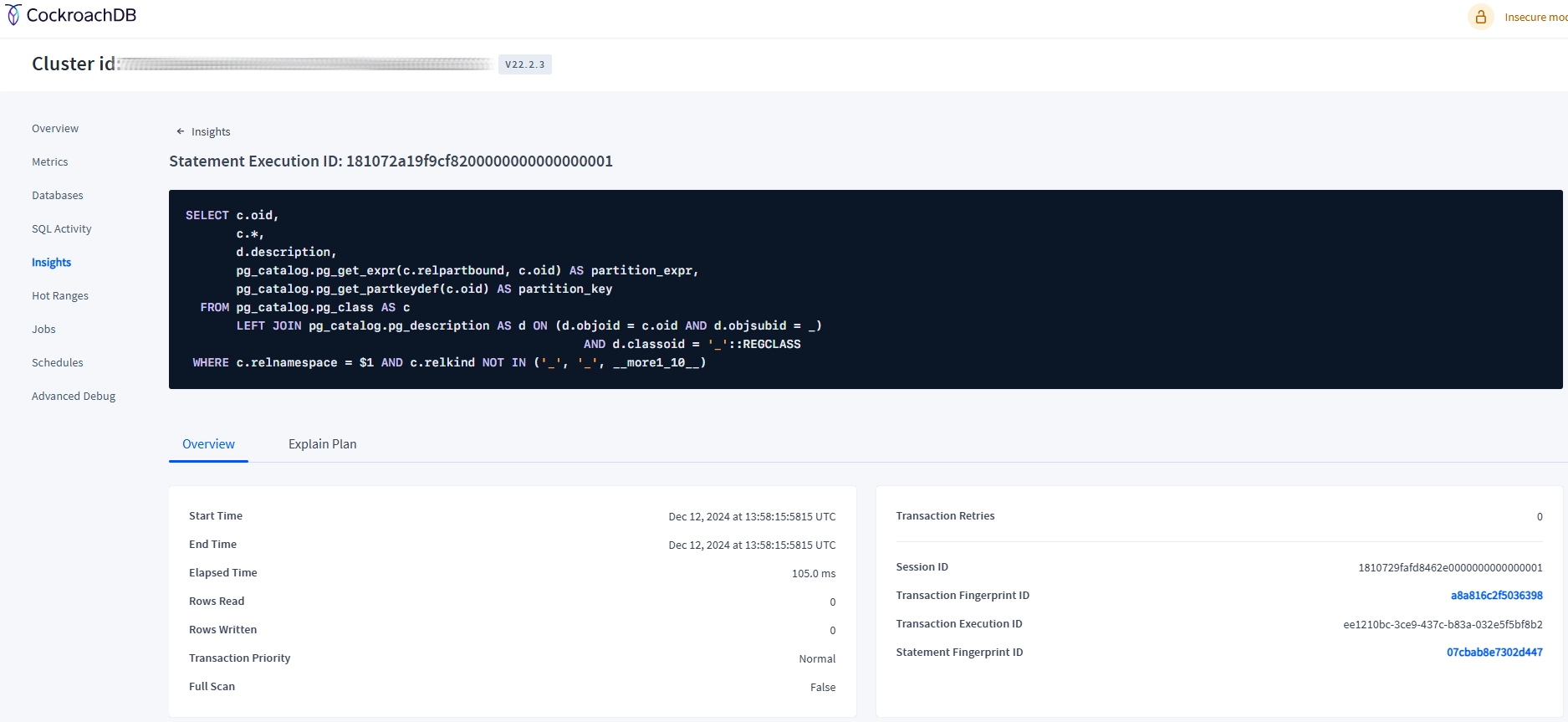
Enhanced Auditing with DataSunrise
While native audit capabilities in CockroachDB provide solid functionality, DataSunrise extends these features with comprehensive database security and auditing. Key benefits include:
- Centralized audit management
- Real-time monitoring
- Advanced reporting capabilities
- Dynamic data masking
Setting Up DataSunrise for CockroachDB
Getting started with DataSunrise involves these steps:
- Log in to the DataSunrise Dashboard
- Add a new CockroachDB instance
- Configure audit rules
- Go to “Transactional Trails” tab to check your audit trails
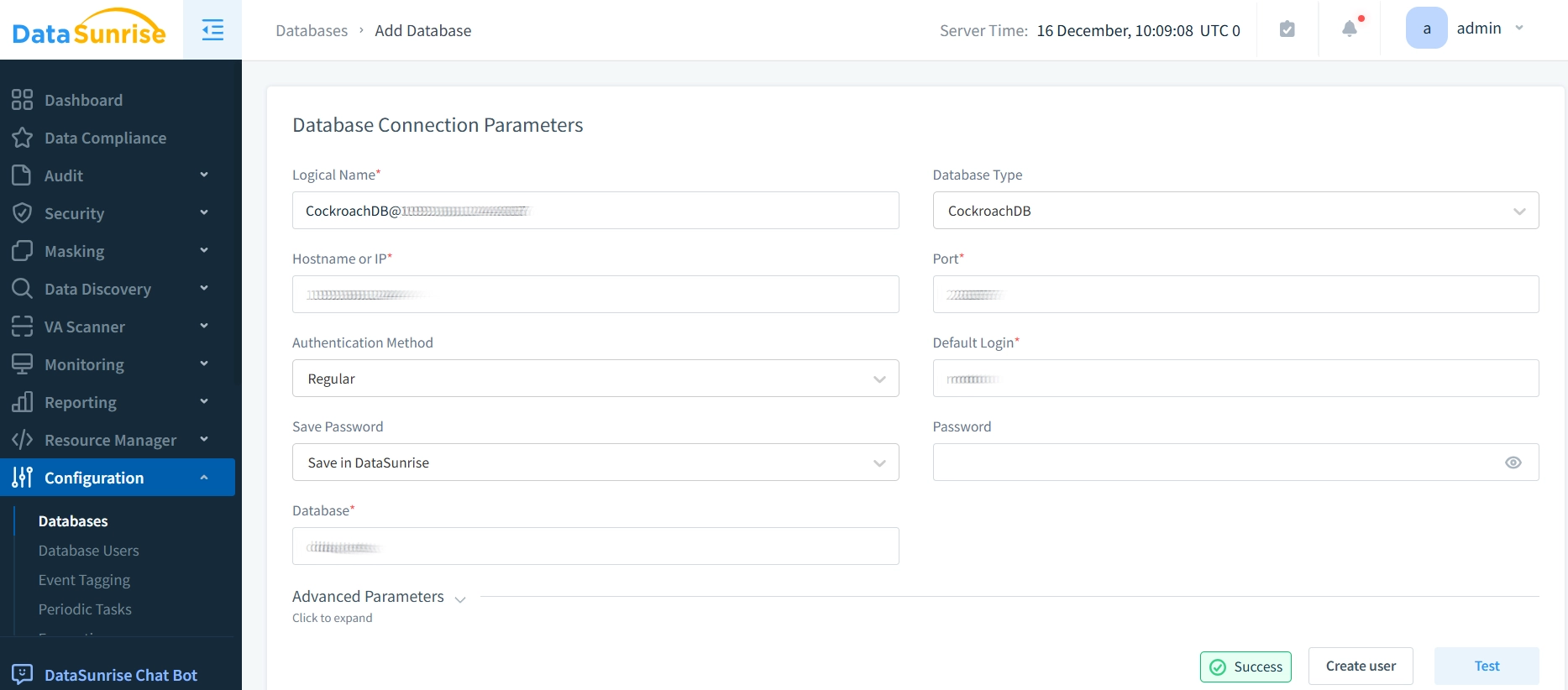
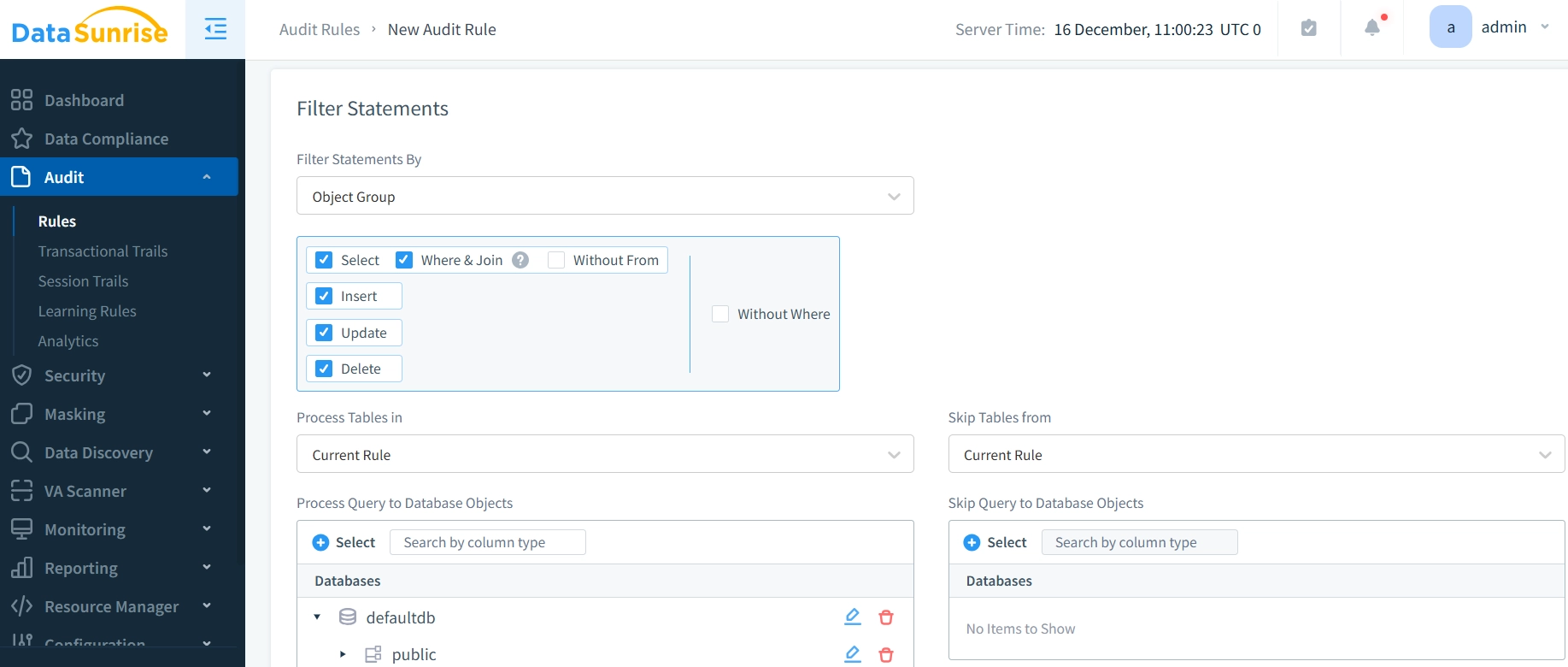
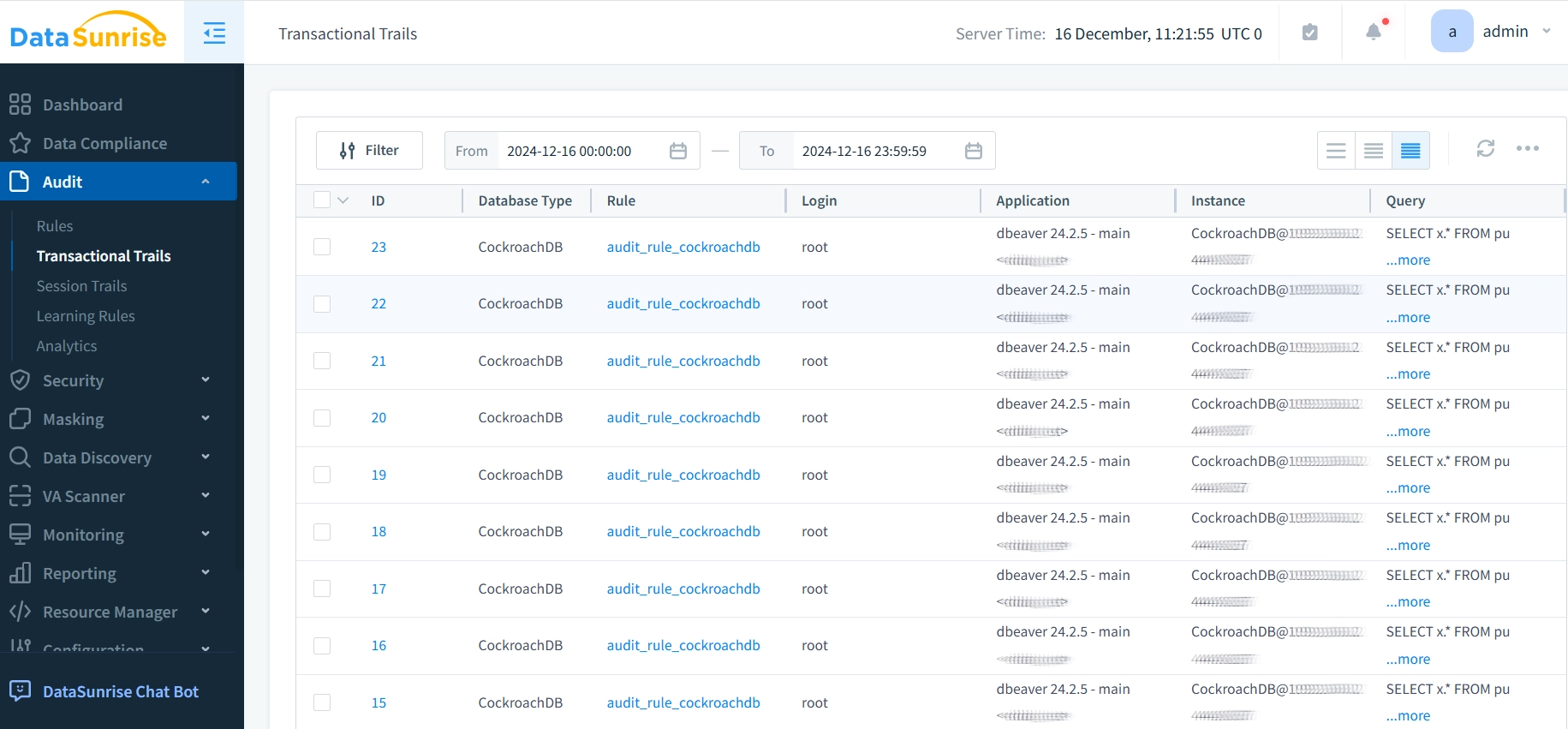
Best Practices for Audit Trail Management
1. Performance Optimization and Maintenance
Regular maintenance forms the foundation of effective audit trail management. Organizations should implement scheduled archiving of audit logs to prevent performance issues and maintain quick access to recent data. Moreover, automated cleanup procedures for older logs and careful storage monitoring help maintain optimal database performance.
2. Security Implementation
Security forms the cornerstone of reliable audit trail management. Therefore, robust encryption must be implemented for audit logs to protect sensitive information. Additionally, strict access controls ensure audit data visibility remains limited to authorized personnel. Regular backups of audit trails, maintained separately from main database backups, help guarantee data integrity during security investigations.
3. Compliance and Documentation
Organizations must align their audit procedures with compliance requirements. Furthermore, thorough documentation of all procedures supports both internal governance and external audits. Regular verification ensures the completeness and accuracy of logged information, while proper retention policies meet industry regulations.
4. Third-Party Solution Integration
Implementation of specialized tools like DataSunrise significantly enhances audit capabilities. Advanced features such as automated monitoring, comprehensive reporting, and centralized management streamline audit processes across multiple database instances. As a result, integration of third-party solutions adds valuable security and compliance features beyond native capabilities.
Conclusion
A well-implemented CockroachDB audit trail provides essential monitoring and security capabilities for modern database systems. While native features offer reliable foundational capabilities, organizations can enhance their audit infrastructure through best practices and third-party solutions.
For organizations seeking comprehensive database security solutions, DataSunrise provides tools that complement CockroachDB’s native capabilities. Our security suite offers centralized control over audit trails, masking rules, and compliance requirements. Visit DataSunrise’s website to schedule an online demo and explore how our tools can strengthen your database security infrastructure.
